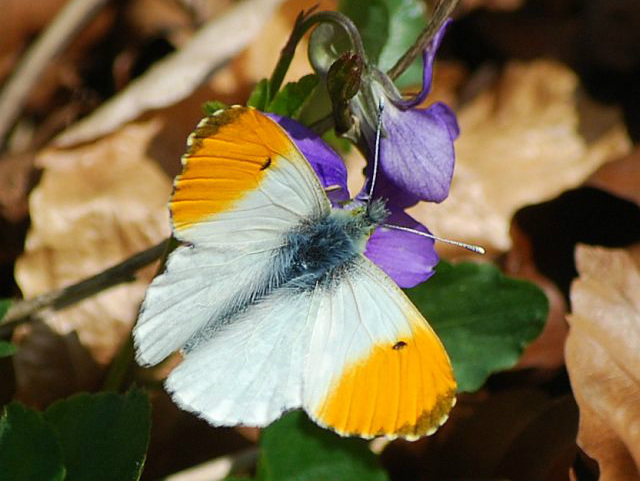
| Butterfly Conservation |
 |
| Hertfordshire & Middlesex Branch |
 |
|
|||
| Saving butterflies, moths and our environment | ||||


Orange-tipAnthocharis cardaminesWidespread and common resident Distribution and Status Abundance and range have been relatively stable since the 1980s although there are now notable losses in the north-eastern part of Hertfordshire. Loss of suitable habitat may be a factor but reduced recorder effort in the last few years cannot be discounted. Conversely, recent new colonies in south and west Middlesex may be attributed to increased recorder effort Habitat Requirements Woodland edges, sunny hedgerows, roadside verges and damp fields. It is much scarcer on dry chalky soils Larval Foodplants Garlic Mustard Alliaria petiolata, Cuckooflower Cardamine pratensis. Other foodplants used include Hedge Mustard Sisymbrium officinale, Black Mustard Brassica nigra and Watercress Rorippa nasturtium-aquaticum. In gardens, Honesty Lunaria annua may be used Adult Food Sources Honesty Lunaria annua, Aubretia Aubretia deltoidea, Cuckooflower Cardamine pratensis, Sweet Rocket Hesperis matronalis Behaviour/Observation notes Male Orange-tips normally emerge before the females and are very active in the early stages when searching for mates. Towards the peak flight period, both sexes should be easier to approach for close-up views and particularly so earlier in the day when it is cooler Life History The Orange-tip overwinters as a pupa often away from the foodplant the larva was feeding on. It has been reported that a few pupae undergo diapause for more than one winter but it is unknown what causes this. Adults usually start emerging in the middle of April and numbers hitting a peak during the second week of May. Only one generation is produced each year but in warm summers a partial second brood may result. Eggs are laid singly either on the stem or on flowerheads and when they soon turn orange, are one of the easiest eggs to find in the wild. The larvae may become cannibalistic by eating other eggs or smaller larvae on the same plant Further information
UK distribution map |
Copyright Butterfly Conservation © 2019 Hertfordshire & Middlesex Branch
Privacy and Copyright Statement and Cookie Policy Statement
Butterfly Conservation
Company limited by guarantee, registered in England (2206468)
Registered Office: Manor Yard, East Lulworth, Wareham, Dorset, BH20 5QP. Tel: 01929 400 209
Charity registered in England & Wales (254937) and in Scotland (SCO39268). VAT No. GB 991 2771 89